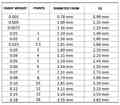DIAMOND CERTIFICATION
AND REPORT VERIFICATION
Natural mined and ethical lab grown
On this page:
Independent diamond grading explained
Example diamond grading reports
Coloured diamond grading
Diamond set jewellery reports
Lab grown diamond grading
Diamond authentification
Verify your grading report online
About GIA, IGI, WGI & HGDL certification
only buy a diamond with THIRD PARTY grading & certification
There are several gemological institutes which provide independent, third party diamond grading and certification.
This applies to both natural earth mined and lab grown diamonds.
The credibility within the industry globally of each grading institute is largely determined by the consistency of how it grades each diamond.
For natural mined diamonds, the GIA and IGI are generally regarded as the most consistent and respected.
The WGI, AGS, HRD, EGL and SGL are considered credible alternatives.*
In some cases a jewellery retailer may only offer you their own diamond grading certificate.
This is not acceptable due to the inherent conflict of interest that exists; it is much like marking one's own homework!
You must insist upon the item being graded independently, even if you are required to pay for the certificate.
If the diamond is not authentically certified you need to ask yourself why. What may seem like a bargain will prove to be anything but.
Please note that salt and pepper diamonds are not certificated by the GIA due to the inherent number of inclusions found within each stone, but we will provide a certification of diamond authenticity.
This is why Pobjoy only sell individual diamonds graded and certified by the most respected third party grading institutes in the industry.
Each third party diamond grading certificate we provide with our precious gemstones includes the precise specifications of your diamond.
It is an independent, verifiable assurance of it's quality and unique characteristics.
You can also verify your diamond certification free of charge against the GIA, IGI and WGI online databases.
This applies to lab grown diamonds too.
DIAMOND-SET JEWELLERY
For fine jewellery set with natural mined diamonds, where the individual carat weight of each stone is generally less than 0.30 (or "30 points"), we are usually able to provide a third party certificate.

This certification, which will be from either the World Gemological Institute (WGI) or Hatton Garden Diamond Laboratory (HGDL), includes a photo of the item, the authenticity, carat weight and grading of the gemstones set within the jewellery.
In the case of laboratory grown diamond-set jewellery, authenticity of the diamonds is verified directly by Pobjoy Diamonds using specialised testing equipment.
We buy loose, small "melee" laboratory grown diamonds only from a recognised global industry platform, which qualifies and verifies the integrity of each of it's suppliers first.
If you are unsure about the diamond grading of any of our collection designs, please contact us before placing your order.
The IGI first offered the comprehensive grading of lab grown diamonds in 2005.
The process of evaluating the overall grade and specification of each diamond is exactly the same as for natural mined diamonds.
In addition to the report document created for each stone, the certificate number is nano - inscribed around it's girdle (outside rim), although this can only be seen under ten times magnification.
Although the GIA has also been involved in the grading of lab created diamonds for several years, it only started offering full certification in 2020.
As with the IGI, each lab created diamond is inscribed along the girdle of the stone.
It is otherwise impossible for even the most experienced jeweller to tell the difference between a natural and a lab grown diamond.
Inscribing aside, it is only the extensive skillsets and extremely sophisticated equipment at the disposal of the specialist grading institutes, that a natural diamond may be distinguished from a lab grown stone.
And in case you were wondering, a lab diamond cannot be told apart from a natural diamond when using industry-standard technological tests (except for the highly advanced processes employed by the IGI and GIA).
The majority of jewellery grade, cut and polished lab grown diamonds originate in the Far East, India and the USA
All our diamonds are conflict free and conform to the Kimberley Process.
* Natural mined diamonds. Independent Source: 'The Diamond Pro'
DIAMOND AUTHENTIFICATION
Natural earth & lab created diamonds
Before diamond jewellery, polished loose diamonds and coloured gemstones are presented to you we carry out additional verification for added peace of mind.
Using an industry standard thermo and electric probe all our diamonds are checked for authenticity independently from the certification provided. This technology does not facilitate a detailed grading process but assures that the diamonds and semi precious stones are real and not simulated.
The results are kept on record with other detailed notes including certificate numbers, electronic copies of each certificate and photos of each item of jewellery for future reference. This also means that we are able to verify items returned to us, for example for polishing, before sending back to you.
VERIFY YOUR GRADING REPORT
To verify the diamond report provided with your diamond (natural earth mined or lab grown), simply click on the appropriate icon below.
Then just key in the certificate number - which is usually found near the top of the grading report - and click go.








